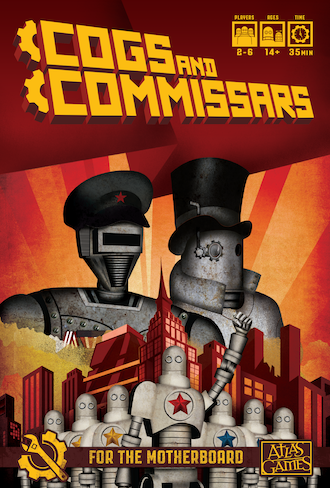The following is the second of our guest blogs for Unknown Armies Third Edition, once again by co-creator and lead designer Greg Stolze.
The third edition of Unknown Armies
makes a number of changes to the mechanics and, moreover, to the
overall gaming framework. Most of these had the player’s experience at
the table squarely in the crosshairs.
The
first thing I did with the new rules was attempt to streamline things a
little. I’ve always craved efficiency in my systems, and my desire to
have things do double or even triple duty has only deepened as I’ve aged
into this crotchety, cane-waving burlesque of my supple-joined younger
self. If you’re an old UA fan, kiss Body and Speed goodbye. No one was
ever really excited about having a high Speed score, were they? Instead,
all the stuff that used to default to “Er, um, I guess we use Speed for
that?” is now bolted to a series of innate Abilities. These
are broad categories of endeavor that anyone can try—spotting a clue,
jumping a fence, punching a shark. They’re now tied to your levels of
trauma, so if you’ve experienced a lot of violence in your life, your
wild haymakers are more likely to land with a sickening thud. But at the
same time, in exchange for being a more efficient deadly weirdo, you
lose your ability to make emotional connections. One rises, one must
fall. The more of a degenerate criminal you are, the less you’re able to
function as a reliable, trustworthy job-holder.
(If you’re a fan of A Dirty World, this dichotomy of ability may look a little familiar.)
There
are end-runs around this, of course, and they come from doubling down
on the do-it-yourself skills that people always liked in earlier UA
editions. Those are now Identities and they do even more
than they did previously. They sub in for Abilities, without eroding as
you get more hardened to life’s awfulness, so if you have an Identity
that lets you bond with other humans—an Ability that gets weaker as you
become more inured to violence—it doesn’t change as you
get more hardened and emotionally scarred. Mostly though, Identities
work this way: You can roll them for anything, if the sentence “Of
course I can do that, I’m a ______!” makes sense. Want to use your
Accountant Identity to embezzle from your boss? “Of course I can hide
the money offshore, I’m an accountant!” Works less well for “Of course I
can jump the gorge on my Harley, I’m an account!”
(If you’re a fan of Over the Edge, this breadth of definition may look a little familiar.)
Other
changes focused on the biggest problem from first edition, which was
that people read it and said “It’s awful neat, but what do you do?”
Second edition addressed this with narrative frameworks—“We’re all
agents of the New Inquisition” or “We’re trying to expel the Masterless
Man from the Invisible Clergy” or “We’re DEA agents who stole occult
artifacts in South America.” Third edition digs further into that,
placing narrative frameworks front and center in character generation.
The first thing you decide is not who you are, but what your group is trying to do. Your group, your cabal, is constructed around this Objective.
(If you’re a fan of REIGN, this sort of collective ambition may look a little familiar.)
Having
the players define an objective not only gives them buy-in on the game,
it helps resolve the tension between “sandbox” and “railroad” play
styles. If you’re not up on these ideas, I’ll give you the very brief
version. In a railroad game, the GM has set it up like a maze (often
it’s a literal dungeon) and the players’ choices are limited, though
possibly very broad. This is great for GMs, who get to prepare a lot,
but can leave the players feeling like rats in a maze. Sandbox, on the
other hand, lets players steer the plot, which offers intoxicating
freedom… but requires the GM to spin a lot of plates and be ready to pivot towards the next shiny object that catches the PCs’ eyes.
Objectives
try to build a railroad through the sandbox. The players get to pick
what the Objective is, so they get that ‘freedom’ that kids today are
always going on about. The GM, on the other hand, knows the one thing they’re going to be hellbent for every session, and can plan accordingly.
UA
has always been character-focused, and now the character generation
system reflects that, by having players collaborate on the local setting
while they build characters. Everything starts out
connected. PCs start out connected to locations and, most importantly,
to each other. Building out from the Objective aims the setting straight
at the characters, and aims them right at each other.














The value of the education is permanently limited by the strangulation of student loan debt - which, by the way, erases any NPV due to the cost of borrowing money. I've learned that to do my homework.
ReplyDeleteMany students buy essay writing. They prefer not to produce their personal essays with lots of mistakes, but to buy
ReplyDeletecool essays https://essays-services.net/cool-essay.html online of the highest quality.
This blog is always so informative. Thanks for sharing!
ReplyDeleteI am pleased to announce that I have successfully passed the AI-900: Microsoft Azure AI Fundamentals exam with high marks. The comprehensive study materials and practice resources from CertsForce.com were instrumental in my preparation, providing me with the essential knowledge and confidence needed to excel in this certification.
ReplyDeleteCheck for more info about https://www.certsforce.com/microsoft/exam/ai-900
Discover fun, affordable experiences that bring people together, offering creative group outing ideas for friends, coworkers, or families seeking memorable moments beyond routine plans everywhere.
ReplyDelete